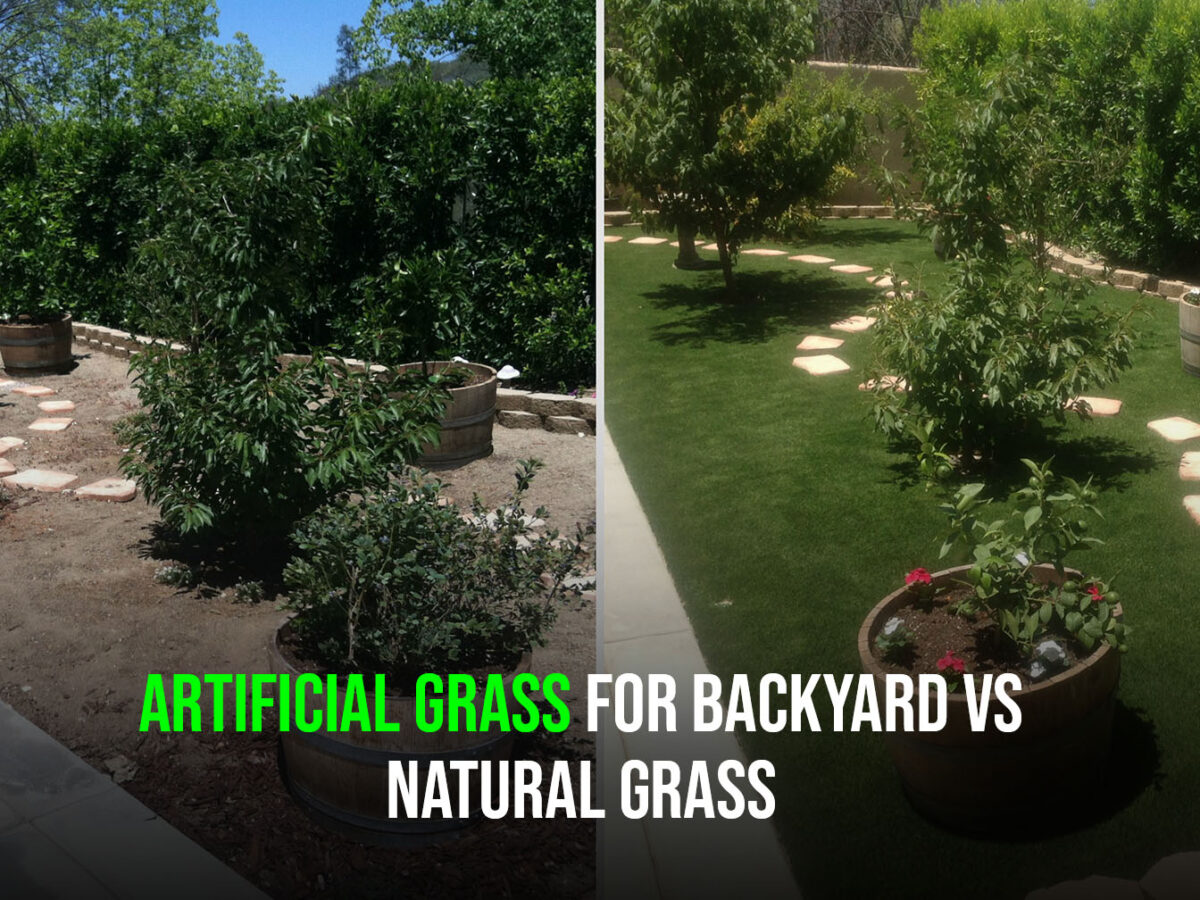- BACKYARD
- COMMERCIAL
- ENVIRONMENT
- FIELD TURF NEWS
- GOLF
- MAINTENANCE
- NEWS
- PETS
- POOL
- RESIDENTIAL
- TURF TIPS
How Resistant Is Artificial Grass for Backyard to Turf Diseases Compared to Natural Grass?

A lush, green lawn is the pride and joy of many homeowners, but it can quickly turn into a nightmare due to various turf diseases. Unlike natural grass, however, artificial grass for backyard is impervious to these diseases. But just how resistant is artificial grass for your yard compared to natural grass? Take a look:
How Does Natural Grass Catch Turf Diseases?
Introducing you to turf diseases begins with understanding how natural grass falls prey to them. Conditions such as moisture levels, temperature, and lawn care practices play significant roles in triggering these diseases.
Moisture Levels
Excessive moisture trapped within the grass blades encourages the growth of harmful fungi and bacteria. This can occur due to overwatering, poor drainage, or environmental conditions like heavy rainfall, and creates an ideal breeding ground for disease-causing microorganisms.
Temperature
Turf diseases such as Dollar Spot or Red Thread are temperature-dependent, thriving in conditions between 60°F and 85°F. Any drastic change in temperature can cause stress to the grass, making it more susceptible to diseases.
Lawn Care Practices
Improper lawn maintenance, including poor mowing habits, incorrect fertilization, and inadequate aeration, can weaken the grass and open the gate for various diseases. For example, when grass is cut too short, it has less energy for growth and fights off diseases less effectively.
Devastating Turf Diseases in Yards
Turf diseases can be remarkably destructive, leading to unsightly patches and major damage to the yard. Take a look at some of the most common turf diseases and their implications:
Brown Patch
Brown patch lives up to its name, causing large, circular brown patches to appear on your lawn. It loves heat and high humidity, making it a common summertime disease.
Pythium Blight
Also known as “grease spot,” Pythium blight can wipe out a lawn practically overnight in the right conditions – primarily hot, wet weather. It starts as small, darkened patches that rapidly enlarge in a short period.
Dollar Spot
Dollar spot creates small, silver dollar-sized spots scattered throughout your yard. Given its nature, it can merge multiple spots into larger, sprawling patches of dead grass.
Red Thread
As the name implies, Red Thread disease appears as red threads wrapping around the grass blades, eventually turning them red or pink. It’s a common issue in cool, wet weather.
Snow Mold
A cold-season disease, snow mold appears as straw-colored patches with a pink or gray moldy appearance when the snow melts in spring.
These diseases not only ruin the look of your yard, but they also can take a lot of time, effort, and money to control or eradicate. In severe cases, it might require complete lawn reinstallation.
Artificial Grass Is Impervious to Turf Diseases
One of the best ways to avoid turf disease-related troubles is to opt for artificial grass for the backyard. Here’s why diseases can’t infect it:
No Organic Material
Artificial grass is made from synthetic fibers, primarily polyethylene, polypropylene, and nylon. Unlike natural grass, it doesn’t provide the organic material necessary for microorganisms, such as bacteria and fungi, to thrive.
In natural grass, the decaying organic matter, like dead leaves and roots, invites disease-causing microorganisms that break down the materials. The absence of such organic debris in artificial turf eliminates this potential hazard.
Temperature Resistant
Artificial grass retains its color and structural integrity regardless of temperature changes. This durability means that it doesn’t experience stress or weaken like natural grass during extreme temperature changes.
The growth cycles of natural grass are highly temperature-dependent: certain species thrive in cooler or warm temperatures. This sensitivity can leave natural grass vulnerable during the transition periods between different seasons. Artificial turf doesn’t have the same issue.
Reduced Maintenance
Artificial grass for the backyard Is a breeze to maintain, providing several advantages in the quest to avoid turf diseases.Eliminating the need for mowing prevents the risk of spreading diseases commonly associated with mowing equipment or poor mowing practices. Likewise, removing the need for aeration, which helps natural grass suffering from compacted soil, prevents similar issues.
Keep Your Yard Free of Turf Diseases
Artificial grass offers a simple solution to the endless battle between your beautiful lawn and frustrating turf diseases. By choosing it, you can enjoy a hassle-free, immaculate green yard regardless of the season, free from the threats these diseases pose.
Ready to replace your lawn with disease-resistant artificial grass? Get in touch with Field Turf Landscape for a free consultation. Call us at 866-352-4575 or send us a message online to get started!


